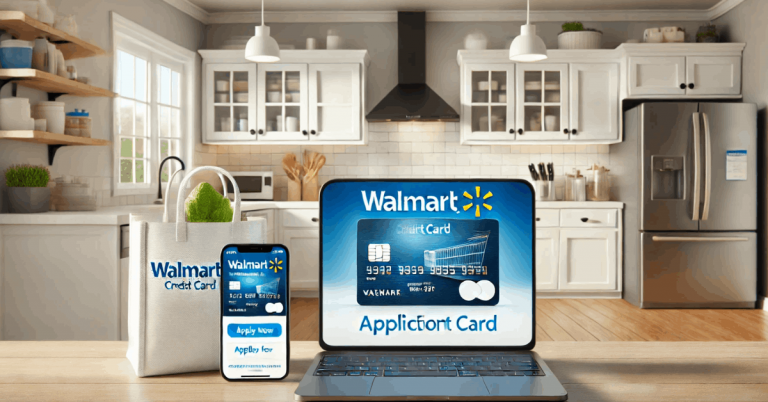This article is designed to guide you through applying for the Food Stamps Program, now officially known as SNAP. It aims to simplify the application procedure, making it accessible and manageable.
By providing a detailed, step-by-step approach, we ensure potential applicants understand the requirements and the submission methods. We aim to empower you with the knowledge needed to secure benefits and support your household successfully.
Understanding SNAP Benefits
The Supplemental Nutrition Assistance Program (SNAP) provides vital nutritional support to eligible low-income individuals and families. This federal aid is crucial in helping millions manage their grocery budgets more effectively.
As living costs rise, it offers a buffer that ensures access to healthy food. By assisting households in maintaining balanced diets, SNAP plays an essential role in community health and well-being.
Eligibility Criteria
Eligibility hinges on income levels, family size, and certain special conditions. Income limits are set according to household size and are adjusted annually.
Special conditions might include elderly or disabled members, affecting eligibility thresholds. Knowing these guidelines is crucial for determining whether you qualify for assistance.
Assessing Your Eligibility
To assess your eligibility for SNAP, start by reviewing your household income against the federal poverty line. Consider the number of people in your household and any applicable deductions, such as medical expenses for seniors or the disabled.
Gather recent pay stubs, benefit statements, and any other income documentation. Visit your state’s SNAP website or contact local offices for specific tools and calculators to help evaluate your situation.
Documents Needed
Preparing the proper documents is critical to a smooth application process. Having all the required materials ready can expedite your application.
Required documentation:
- Proof of identity: Driver’s license or other government-issued ID.
- Proof of income: Recent pay stubs, unemployment benefits, or tax returns.
- Residency documents: Utility bills or lease agreements in your name.
Organizing documents:
- Create a checklist of documents needed for your SNAP application.
- Keep original documents and make copies for submission.
- Organize documents chronologically in a folder for easy access during your application process.
- Update your documents as necessary, especially if there are any changes to your income or household size.
Applying for SNAP
Applying for the benefits involves a straightforward, multi-step process. Understanding each step helps ensure your application is complete and processed efficiently.
Locating Your State’s SNAP Application
The first step is to find your specific state’s SNAP application form. Each state has its application process, accessible through its respective Department of Social Services website.
Physical copies can often be found at local offices. It is crucial to use the correct form to avoid any delays in processing your application.
Methods of Application
You can apply for the benefits online, by mail, or in person. Online applications are generally faster and can be accessed through your state’s social services website.
You can mail your completed application to the designated address or apply in person at a local office. Choose the method that is most convenient for your situation.
Completing the Application Accurately
Accuracy is key when completing your application. Ensure all information is current and truthful, as errors can cause delays.
Double-check your details before submission, particularly your income level, household size, and any deductions you claim. Support your application with the required documents to verify your information.
What to Expect After Submission?
After submitting your application, a verification process begins. Understanding what comes next can help you manage your expectations and prepare for additional steps.
Verification Process
Once received, SNAP officials verify your application. You may need to provide additional documents or attend an interview to confirm your details.
This step is crucial to ensure that benefits go to eligible recipients. Keep all relevant documents handy and be prepared to answer questions about your application.
Timeline for Receiving a Decision
The decision on your application typically comes within 30 days. Emergency criteria may expedite the process when immediate assistance is needed.
Check regularly with your local office for updates. Patience is essential, as processing times can vary based on application volume and individual case complexities.
Handling Application Denials
If your application is denied, review the reasons in the decision letter. You have the right to appeal the decision within a specified timeframe.
Understand the appeal process, and consider seeking assistance from legal aid services if needed. Promptly gather any additional supporting documents that may help your case during the appeal.
Managing SNAP Benefits
Once you receive the benefits, managing them effectively maximizes your assistance.
Using your benefits:
- Its benefits are allocated monthly on an Electronic Benefits Transfer (EBT) card.
- You can use your EBT card to purchase eligible food items such as fruits, vegetables, dairy products, and meats at participating stores.
- Benefits are meant for food products only and cannot be used for alcohol, tobacco, or non-food items.
Renewing benefits and reporting changes:
- The benefits require periodic renewal and reporting of any changes to your income or household.
- Stay aware of the renewal dates and prepare to submit updated information as required.
- Immediate reporting of changes like increased income or a change in household size is essential to maintain eligibility.
Additional Support Resources
With the proper support and resources, navigating the benefits can be smoother. This section highlights additional avenues for assistance beyond the SNAP application process.
Contacting SNAP Offices for Help
If you encounter challenges during your application, SNAP offices are a primary resource for assistance. Contacting these offices can provide detailed guidance and clarification on application procedures.
Most offices offer help over the phone, via email, or in person. These services ensure that all your queries and concerns are promptly addressed.
Other Nutritional Support Programs
Apart from SNAP, numerous other nutritional support programs are available to individuals and families in need. Programs like WIC, the National School Lunch Program, and local food banks can provide additional support.
Each program has its eligibility requirements and benefits, offering various services from emergency food assistance to nutritional education. Exploring these programs can provide further aid in maintaining food security.
The Bottom Line on Navigating SNAP
Navigating the Food Stamps Program application involves clear steps, necessary preparations, and the availability of supportive resources. Ensuring you understand each phase can significantly enhance your chances of success.
Use this guide as a roadmap to approach the process methodically. For further assistance, don’t hesitate to contact SNAP offices or explore additional nutritional support programs.












